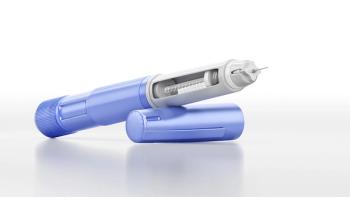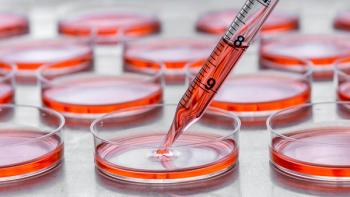
- BioPharm International-08-02-2007
- Volume 2007 Supplement
- Issue 5
Cell-Culture–Based Manufacturing: Meeting the Challenge of 21st Century Influenza
Vaccines against strains originating from avian flu may achieve poor yields in egg-based systems. Consequently, both public and private interest in alternative systems is high.
ABSTRACT
Conventional influenza vaccines use an egg-based culture and harvest process. This method of production is slow and inflexible, compared with emerging cell-culture based approaches that can respond rapidly to the influenza virus' inherent ability to "drift," or more dangerously, to "shift"—a critical factor that would arise in the event of a pandemic. ImmBio's ImmunoBodies is a breakthrough vaccine under process development at Eden Biodesign that uses a baculovirus expression system for production. The vaccine is constructed from part of the flu hemagglutinin protein fused to the human dendritic cell-binding Fc region of human immunoglobulin, enabling it to efficiently trigger a broad, protecting response. In the event of a new strain tracking out of its protective range, the construct can be rapidly re-engineered. The baculovirus manufacturing capacity also can be augmented to produce large volumes.
The utility of influenza vaccination is well established, especially in "at risk" groups; nevertheless, infections result in some 300,000–500,000 deaths worldwide every year. Inoculation with traditional flu vaccine (delivered as an annual trivalent vaccine) leads to raised antibody response to virus hemagglutinin protein, which protects against anticipated major strains. However, the genome of the influenza virus is encoded as RNA, making it prone to mutation. Influenza thus frequently evolves into serotypes that evade the immune memory that has been raised in response to previous vaccinations or to formerly prevalent serotypes. In the event of a major "shift" in the strain, such as from a reassortment of avian influenza capable of human-to-human transmission, the lack of prior immunity in the population could result in a pandemic and a high mortality rate.
Of the three major pandemics in the last century, the "Spanish flu" was the most deadly, killing more people than in World War I, which had just preceded it. With the current prevalence of avian flu as a source of genetic reassortment, a significant elapsed time since the last major shift, and the recognition that egg-based flu vaccines cannot meet anticipated demand, concern has grown. Vaccines against strains originating from avian flu may achieve poor yields in egg-based systems. Hence, such vaccines may need modifying, potentially eroding their efficacy and extending their lead time to development. Both public and private interest in alternative systems is consequently high, with development focused on mammalian cell-based manufacturing approaches, but these may likewise have limitations.
ImmunoBiology ("ImmBio"), a biotech vaccine development company in Cambridge, UK, and Eden Biodesign, operating the UK's National Biomanufacturing Centre in Liverpool, are therefore developing an antibody-antigen fusion complex product manufactured in a baculovirus expression system.
Influenza
The influenza virus belongs to the Orthomyxoviridae family. It is an enveloped RNA virus with a segmented genome consisting of eight single-stranded negative RNA segments. The virus is split into three subtypes: A, B, and C, based on antigenic differences in two of its structural proteins: the matrix protein M2, and the nucleoprotein. As infection with the C subtype is relatively mild, vaccination is typically against the A and B subtypes.
Projecting from the viral envelope is a conglomeration of three proteins: hemagglutinin (HA), neuraminidase (NA), and the matrix (M2) protein. Influenza A viruses are subtyped according to the HA and NA proteins they display on their viral envelope. Although 14 HA proteins and 9 NA proteins have been identified, only a limited number are infectious to humans (H1, H2, H3, N1, and N2). The most common combination currently in circulation is the subtype H3N2. Distinct strains can be further identified by the virus type, geographic origin, and year of isolation.
To cope with this variety, current vaccines are trivalent, with two components against A and one against B. Through the World Health Organization (WHO) surveillance network, which tracks strain changes, manufacturers that supply vaccines to the US and Europe are advised around February what subtypes are expected to be prevalent through the following winter, when influenza incidence is highest. Typically, at least one component must be altered each year. The antigen composition recommended by the WHO may need modification if the strain grows poorly in eggs, a situation that may compromise efficacy. To begin the Northern hemisphere seasonal vaccination program, large volumes of vaccine product need to be available by September.
Egg Technology
Influenza vaccines are made by inoculating live flu virus into fertilized chicken eggs, then purifying and inactivating the resulting egg-adapted virus to produce trivalent inactivated virus, or TIV. TIVs represent the majority of the currently licensed and marketed flu vaccines worldwide. In addition, there is the recently licensed egg-derived live attenuated influenza vaccine (LAIV) produced by MedImmune.
Given the February-to-September time constraint, vaccine manufacturers have approximately six months to develop, manufacture, and release millions of doses of trivalent vaccine. In practice, this short timeline necessitates that manufacturers speculate on likely strains each year, so they can commence production of at least one, and probably two, strain-specific bulk antigens in advance of knowing actual strain requirements. This tight schedule leaves little or no time to optimize and validate the production process for the new virus strain. Consequently, the purification stream used for egg-derived flu vaccine involves a trade-off between the need to specifically purify the antigens from the crude egg harvest and the need to have a process that is not so specific that it no longer works if the properties of the HA and NA antigens change due to drifting or shifting. This trade-off does not lend itself to a stringent purification stream with predictable yields.
Although manufacturing capacity has been growing and the uptake of seasonal vaccination has increased, demand has outstripped capacity. Early assumptions were that the global capacity of around 300 million doses per annum could be tripled in a pandemic situation by producing only a monovalent rather than a trivalent vaccine. These assumptions have been modified by the recognition that low natural immunity in the population to a new virus may require a high dose, possibly in a boost regimen. Switching from seasonal flu capacity, built to meet elective seasonal vaccination in developed countries, is also grossly insufficient for potential global needs. Indeed, two of the last three pandemics originated in the Far East, where avian flu is most prevalent and where the cost of vaccines can be prohibitive. Antigen-sparing approaches, notably through the use of adjuvants, may enable reduced unit dosage, which could, in turn, increase vaccine coverage from a given manufacturing facility.
New Developments
The substantial shortfalls in the current process have sparked development of alternative non-egg–based manufacturing systems, primarily cell-culture flu vaccines such as those developed by Novartis and Solvay (produced in Madin-Darby canine kidney [MDCK], cells) and by Sanofi-Pasteur and Crucell (using Crucell's PerC.6 human cell line). For these cell-culture–derived vaccines, the live flu virus is used to infect cells in culture. Once the viral infection has propagated through the cells, the live virus is harvested and inactivated in much the same way as in conventional egg-based flu vaccines. These systems rely on being able to generate a seed stock of live virus to use throughout the production campaign. If an avian-flu-type pandemic breaks out, it has been predicted that the live flu strain(s) will require higher containment levels than are normal during vaccine production. This could limit total available manufacturing capacity to those manufacturers that possess the required contained facilities. (The WHO web site,
Several alternative approaches that do not rely on live virus seed stocks have been developed in recent years. These use the genetic sequences that code for virus surface antigens rather than the live virus itself. The genetic sequences are propagated in a form that does not produce infectious virus and does not require high containment manufacturing facilities. The time required to produce these strain-specific genetic sequences for the commencement of a manufacturing campaign is typically weeks to months shorter than the time required for laying down a live viral seed stock. This genetic manipulation approach should therefore reduce annual timelines to clinic and market. The genetic approach is also expected to lead to marketed products that will be less expensive to manufacture than cell-culture flu vaccines, while also being potentially easier to transfer and license at additional manufacturing sites, should the need arise.
When the genetic approach is used to produce purified recombinant HA proteins to incorporate into a vaccine (such as Protein Science's FluBlØk recombinant vaccine, containing trivalent HA antigen made in insect cells), there is a risk that the change in HA strain will lead to altered behavior of the protein in the purification process. In this regard, the PowderMed vaccine that involves inoculation with DNA coding for the HA antigens, rather than the HA antigen proteins themselves, has an advantage, because the purification of DNA should vary little with changes in strain. Another approach that could reduce the potential for variability in production quality involves engineering fusion proteins in which only the HA region varies, while the rest of the fusion protein remains the same. This could be exploited as the basis for chromatographic or membrane purification techniques.
Immunobodies Influenza Vaccine
One of the genetic products in development is based on ImmBio's ImmunoBodies platform technology. The product originated from oncology work conducted by Scancell Ltd that ImmBio adapted for anti-infective applications. The resulting HA–Fc fusion protein vaccine uses baculovirus vectors that are genetically engineered to carry the DNA sequence of chosen HA molecules that are fused to the DNA sequence of the Fc portion of human immunoglobulin. (A more detailed explanation of this platform technology is available at
Due to the presence of its Fc portion, the fusion protein targets dendritic cells, leading to stimulation of T-cell mediated response as well as an antibody response to the HA portion (as is normally seen with conventional vaccines). The combined response should provide protection not only at commencement of infection, when antibodies can bind to influenza virus outside cells, but also at the subsequent stage of viral replication. Infected cells express some viral antigens on their surface and the T-cell response induced by the fusion protein will stimulate their destruction, thus halting the virus' ability to further replicate.
Choice of System
In developing its fusion protein expression system, ImmBio used the following key criteria to select from among four main choices for the expression of a recombinant protein (i.e., bacterial cells such as Escherichia coli, yeast, insect cells, and mammalian cells):
- Speed: Can it meet the annual production cycle or respond to an emergent pandemic?
- Functionality: Does the system express an efficacious product? (The HA requires correct folding, and the Fc requires glycosylation for receptor binding.)
- Cost: How does the cost compare to current marketed influenza vaccines?
- Availability: Are scaled-up manufacturing facilities and regulatory experience available?
From this rating process (Table 1) the baculovirus expression system was identified as the system of choice.
Table 1. The rating process that was used by ImmBio to identify the baculovirus expression system as the system of choice
The insect cell and baculovirus system has the necessary requirements for the manufacture of HA–Fc influenza vaccine. Recombinant baculoviruses can be constructed quickly and, unlike mammalian cell lines, do not require a period of selection and expansion before production can begin. The yields of similar proteins are also fairly uniform and can accommodate the scale required for real use. Cervarix, the new GlaxoSmithKline (GSK) vaccine for human papillomavirus, is manufactured using baculovirus technology, as is Protein Science's influenza candidate, FluBlØk, which consists of three recombinant hemagglutinin (rHA) proteins. Insect cells have been shown to have glycosylation pathways that are similar to those of mammalian cells, so the glycosylation of the HA region is similar to that of mammalian-derived vaccines. A key requirement is to achieve a high yield of purified HA–Fc vaccine by optimizing culture conditions via proprietary expertise developed for virus-like particle production using baculoviruses. A variety of fermenter technologies, including fed batch, perfusion, and "Wave bag" technology, are amenable to insect cell culture.
Additional benefits from an insect cell system include the following:
- Insect cells typically grow faster than mammalian cells, reducing the production times and costs of batch production.
- Insect cells cannot be infected by mammalian viruses, so the need for viral removal steps and validation is reduced, adding to the safety profile of insect-derived vaccines and reducing time and cost to get to clinical trials.
Ahead of an emergent strain shift capable of leading to a pandemic, a suitable vaccine cannot be definitively identified. Some national policies include stockpiling H5 vaccine, assuming that the shift from the currently prevalent H3 will be to H5, and that cross-strain protection within H5 assists in at least some degree of protective priming. However, neither of these two assumptions may hold true. To speed up approval of a new vaccine against an emergent strain, both the US Food and Drug Association (FDA) and the European Agency for the Evaluation of Medicinal Products (EMEA) have established approval processes, though with some differences. The EMEA's declared approach is to approve a "mock dossier," whereby the additional approval requirements are modest if prior mock dossier approval has been gained. Working within the emergent regulatory framework is essential during product development and to date, EMEA approval has been achieved by GSK and Novartis.
Summary
By using a platform technology, ImmBio is reducing the variables associated with having to redevelop vaccine production each year to adapt to the evolution of predominant flu strains. Eden Biodesign has been chosen by ImmBio as a partner to develop this flu vaccine platform technology. This choice is based on Eden Biodesign's expertise in vaccine and other biotech product development through to clinic and market, including preparation of the quality sections for clinical trial and product licensing applications. Eden is developing a manufacturing process for ImmBio's ImmunoBodies fusion protein to maximize yield while reducing production times and costs. Many parameters add up to making a successful marketed product; a key starting point involves attention to developing and documenting a scalable, rapid, and low-cost manufacturing process and its accompanying analytical technology. By dealing early with problems typically associated with late-phase product development, total product development times and costs can be reduced significantly.
Amanda Shipman is a project manager at Eden Biodesign, National Biomanufacturing Centre, Liverpool, United Kingdom, +44 (0)151 728 1750,
Graham Clarke is chief executive officer at ImmBio, Babraham Research Campus, Babraham, Cambridge, United Kingdom, +44 (0)1223 496 1177,
Articles in this issue
over 18 years ago
Pandemic Flu Preparedness: A Manufacturing Perspectiveover 18 years ago
Vaccine Characterization Using Advanced Technologyover 18 years ago
Cancer Vaccines: Asymptotically Approaching Product Approvalover 18 years ago
Regulatory Issues: Pandemic Preparedness Pacing Upover 18 years ago
Plasmid DNA–Based Vaccines: Combating Infectious Diseasesover 18 years ago
New-Age Vaccine Adjuvants: Friend or Foe?Newsletter
Stay at the forefront of biopharmaceutical innovation—subscribe to BioPharm International for expert insights on drug development, manufacturing, compliance, and more.





